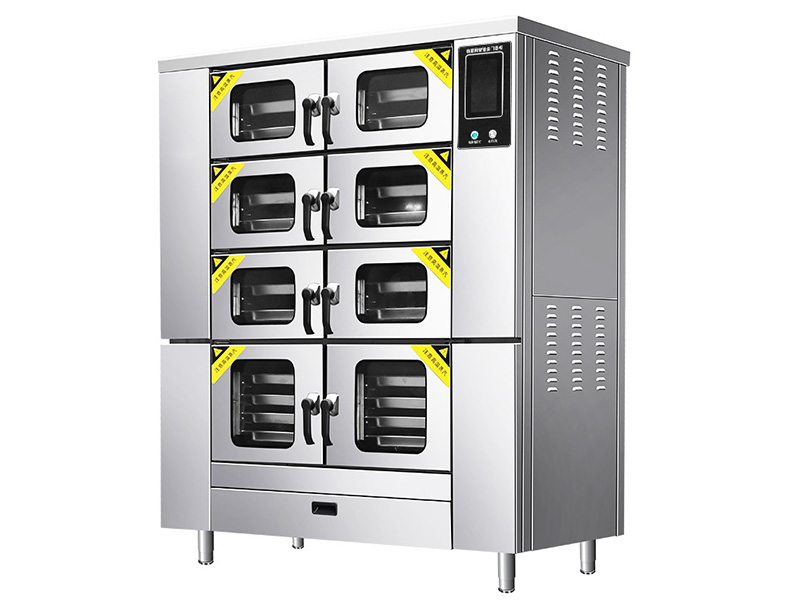The Making of a Commercial Induction Cooker: Precision, Efficiency, and Innovation
In today's fast-paced culinary world, commercial kitchens need equipment that is not only efficient but also reliable. Among the most innovative tools at the heart of modern kitchens is the commercial induction cooker. This device has revolutionized how chefs operate, combining speed, safety, and energy efficiency. But have you ever wondered how a commercial induction cooker is made? Let’s explore the journey from concept to production, and how technology transforms into a culinary powerhouse.
1. Design and Engineering
The creation of a commercial induction cooker begins with detailed design and engineering . Engineers focus on two primary aspects: performance and durability. The cooker needs to withstand the rigors of daily use in busy environments like restaurants and hotels. The design process includes:
- Material Selection : Components like the cooktop, control panel, and internal wiring need to be heat-resistant and long-lasting.
- Energy Efficiency : Induction cookers are renowned for their efficiency, and the engineers ensure minimal energy loss by using high-quality materials and precise electromagnetic technology.
- Safety : Induction cookers are safer than traditional gas or electric stoves. Designers incorporate features like auto shut-off, child locks, and overheat protection to ensure both user safety and appliance longevity.
2. Induction Technology
At the heart of an induction cooker is its induction coil , the key component that enables the cooker to function without direct heat. The coil generates an electromagnetic field that interacts with ferrous cookware, heating the pot or pan directly. This process is more energy-efficient than gas or electric stoves, as there’s no wasted heat around the burner.
The coil is made of high-grade copper and is meticulously wound to ensure even heat distribution. Any variance in the winding process can lead to uneven cooking performance, so precision is critical.
3. Control Systems
Modern commercial induction cookers feature digital control systems . These systems allow chefs to fine-tune temperatures with great accuracy. Microchips and sensors within the cooker monitor temperature changes in real time, allowing for precise cooking control.
Advanced models often include programmable settings for different cooking modes, making them versatile for various culinary tasks such as simmering, sautéing, or boiling. The manufacturing process involves programming these systems to deliver consistent performance across different voltage and power settings.
4. Manufacturing and Assembly
Once the design and components are finalized, the manufacturing process begins. Commercial induction cookers are typically assembled in stages:
- Frame Construction : The frame of the cooker, typically made from stainless steel, is constructed for strength and heat resistance.
- Induction Coil Placement : The copper coil is carefully placed inside the cooker’s body, and insulated to prevent overheating or short-circuiting.
- Electrical Wiring and Components : A complex network of wiring connects the induction coil, control system, and safety mechanisms. Each cooker undergoes rigorous testing to ensure all electrical components work harmoniously.
- Control Panel Assembly : The control panel, often featuring a touch screen or digital interface, is assembled and connected to the cooker’s brain (the microcontroller). This allows the chef to manipulate temperature, timing, and settings easily.
5. Quality Control and Testing
Before a commercial induction cooker reaches the market, it must pass extensive quality control tests . These include:
- Performance Testing : The cooker is tested for its ability to heat consistently and quickly, ensuring it meets the necessary standards for commercial kitchens.
- Safety Testing : Multiple safety checks are conducted to verify the functionality of auto shut-off mechanisms, heat sensors, and electrical insulation.
- Durability Testing : Since commercial kitchens are high-pressure environments, the cookers are tested for their ability to handle continuous use and exposure to heat, moisture, and wear.
6. Final Assembly and Packaging
Once testing is complete, the cooker undergoes final assembly where any additional features (such as detachable parts, handles, or accessories) are attached. It’s then packaged in protective materials to prevent damage during transit and shipped to retailers or directly to commercial kitchens around the world.
7. The Result: A Culinary Game-Changer
Commercial induction cookers are a game-changer for kitchens. Their fast heating times, energy efficiency, and precision make them indispensable in modern gastronomy. Behind each induction cooker is a combination of cutting-edge technology , meticulous craftsmanship, and a dedication to safety and performance.
As more businesses prioritize sustainability and efficiency, the demand for induction cooking technology continues to rise. From concept to completion, the journey of a commercial induction cooker showcases the innovation and attention to detail required to power the kitchens of tomorrow.
---
This article highlights the sophisticated engineering and craftsmanship behind the creation of commercial induction cookers, offering insight into the critical role they play in today’s kitchens.





